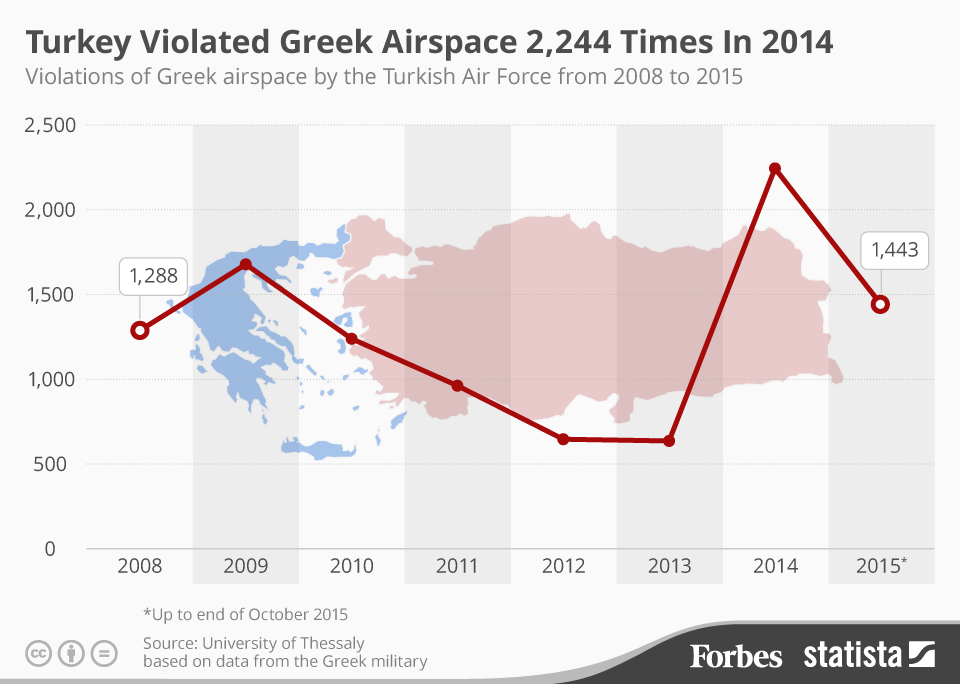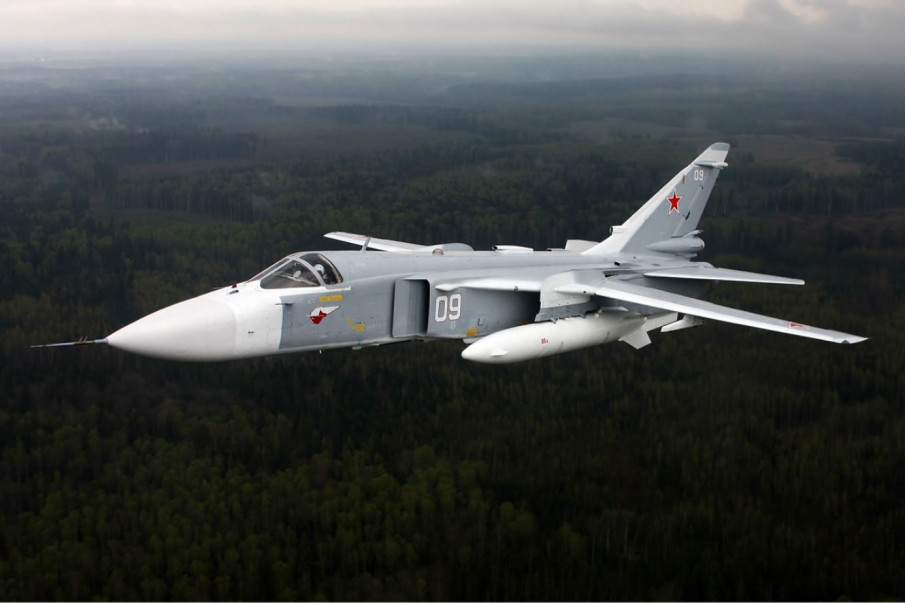It only took 17 seconds to upset the delicate balance of allied forces working against Daesh (aka IS/ISIS) in Syria. Turkish F-16 fighter jets responded to a limited airspace incursion with deadly force on the 24th of November. Turkish Prime Minister Ahmet Davutoğlu, in a meeting with the Turkish Justice and Development Party or AK Party, told reporters and those present that, “I gave the order myself.” This order resulted in the downing of a Russian Su-24 Fencer fighter/bomber, and the death of the pilot, Lieutenant Colonel Oleg Peshkov, who was shot by a rebel faction near the Turkish border as he parachuted to safety.
The navigator survived, but one of his rescuers, Alexander Pozynich, was killed while searching for the surviving crew member when his helicopter was downed by a rebel faction. Russian President Vladimir Putin has called the incident a “stab in the back” from the “accomplices in Turkey,” which further challenges Turkey’s historically questionable actions and passive alliance with Daesh.
Turkey’s passivity toward Daesh has been tailored to encourage the removal of Syrian President Bashar al-Assad, while Russia’s direct action has been geared for the president’s defense and prolonged role as Russia’s regional strategic partner. Essentially, Syria is Russia’s answer to the U.S.’s longtime strategic partnership with Israel. Both partnerships are diplomatically meaningless to Turkey, but Assad remaining in power in Syria is not. Moreover, the Turkish government wishes to hinder further Kurdish autonomy, and the Russians are not opposed to it.
The Turks have also had a bone to pick with Russia following Russian airstrikes on Syrian-Turkmen villages targeted for harboring Daesh tactical targets. Despite the backdrop, Turkey is claiming border security concerns as their defense in the incident. This is an unfounded claim, as Turkey is one of the most prolific airspace violators in the modern world: They’ve accounted for many unauthorized airstrikes against Kurdish groups in Iraq, and 2,224 airspace violations into Greece in 2014 alone. In fact, a formation of six Turkish fighter jets violated Greek airspace on the 26th of November—just days after the Russian jet incident.

The Russian bomber shoot-down was forecasted before it occurred. The likelihood of such an incident was so significant, American and Russian officials met briefly after the beginning of the Russian air campaign to discuss communications options to avoid just such a thing. A similar agreement is said to have been laid out with Turkey by the deputy commander of the Russian Air Force, Major General Sergei Dranov, who on the 15th of October met with Turkish officials in Ankara to plan for contingencies. Russia is allegedly conducting all air sorties on a shared radio frequency with the U.S. and has informed allied nations of that frequency to avoid such incidents. Turkey may not have been operating on this frequency, as a recording from a civilian pilot reportedly from the time of the incident has been released in which a Turkish pilot can be heard instructing an unidentified aircraft to turn south.
Turkey claims that 10 attempts were made in five minutes to communicate with the Russian aircraft over the designated frequency. After the attempts failed, Turkish pilots identified the aircraft as two Su-24 fighter/bombers, a type of aircraft in the Assad arsenal. Turkey is hostile to the Assad government, and viewed the aircraft as a non-responsive threat by Assad. Although eventually one of the Russian aircraft did seemingly respond by bearing south to Syrian airspace, the other maintained a heading for Hatay, Turkey. The Turkish pilots responded as authorized and engaged the aircraft.

That is from the Turkish perspective. Russia and its military command see the incident as a reckless attack on normal Russian airstrike operations, which are consistent with its campaign against Daesh. They claim that the flight path was misconstrued by Turkey, and that the country is maintaining an overzealous defense posture. The Turkish territorial border extends on a finger into Syria and just as easily disappears directly back. In a jet aircraft, the time spent in violation of such a small area is minuscule. A document from the Turkish government surfaced later on the 24th, supporting Russian claims via WikiLeaks that stated, “Russia violated [Turkish] airspace for just ’17 seconds’ with a very slow 243 miles/hour jet.” The U.S. has officially stated that the aircraft is believed to have detonated over Syrian airspace.
In 2012, Syrian forces shot down a Turkish aircraft on the grounds of an airspace violation. Turkey at the time said, “A short-term border violation can never be a pretext for an attack,” and NATO Secretary General Anders Fogh Rasmussen described Syrian actions as a “disregard for international norms.” Such allegations have not been slung at Ankara by NATO in regards to the downing of the Russian fighter/bomber.
NATO and the European Union have discouraged an escalation of hostilities but have backed Turkey’s claims of border defense. The United Kingdom’s Prime Minister David Cameron led the rhetoric parade by saying, “We should respect Turkey’s right to protect its airspace just as we defend our own.” This move can be interpreted more as a counter to a staggering increase of Russian air and sea violations rather than a reasonable act of domestic sovereignty. The United States of America is one of the few NATO countries who have questioned Ankara’s rapid and lethal escalation of force.
Already have an account? Sign In
Two ways to continue to read this article.
Subscribe
$1.99
every 4 weeks
- Unlimited access to all articles
- Support independent journalism
- Ad-free reading experience
Subscribe Now
Recurring Monthly. Cancel Anytime.
This controversial incident appears to be cooling, and looks to be destined to amount to little more than a war of words, pomposity, and the give-and-take of a few dollars. Turkey has since suspended its air operations in support of Operation Inherent Resolve and counter-Daesh operations until a resolution can be reached with Moscow. Some bickering has erupted as to which leader has called whom or ignored calls, the squabbling replete with the expected finger-pointing, break-up-level apology needs, and left-field claims. Russian officials have suspended visa-free travel with Turkey and maintained air strikes on targeted Daesh position near the Turkish border, focusing on the town of Azaz, Syria. The speaker of the Russian State Duma, Sergei Naryshkin, said in a press statement that Russia has the right to a military response, yet the Russian News Agency TASS has since reported that the speaker’s words were taken out of context. Russia’s Foreign Minister Sergei Lavrov has said, “We’re not planning to fight with Turkey,” though Moscow is still deploying the S-400 air defense system to its air base in Latakia, Syria, which is approximately 40 miles from the Turkish border.
The reality of this is that Turkey could have simply called this the unfortunate situation that it is, apologized, and asked how to make it right instead of escalating it into an international political spectacle.
(Featured image courtesy of warontherocks.com)













COMMENTS
You must become a subscriber or login to view or post comments on this article.